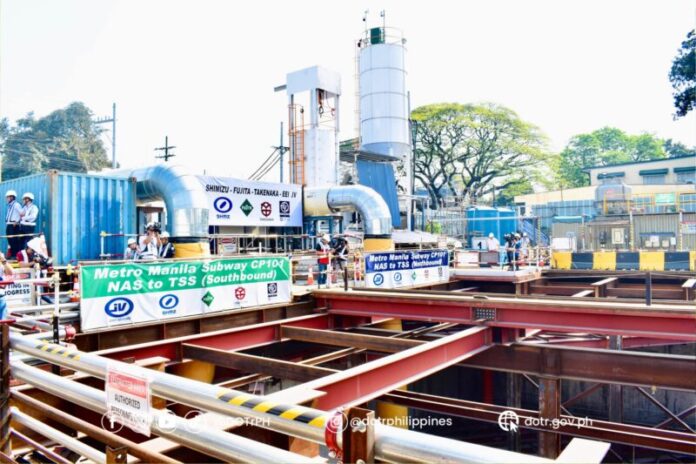
-
Completion of the Metro Manila Subway Project is still well within the 2029 target of the Department of Transportation
-
The current progress of right-of-way acquisition for the project is at around 55%
-
At present, DOTr said construction works for the MMSP stands at a 40% overall progress rate
Completion of the Metro Manila Subway Project (MMSP) is still well within the 2029 target of the Department of Transportation (DOTr), according to a DOTr official.
This is even if the project has the biggest in scope of right-of-way (ROW) acquisitions in any government infrastructure project. Right now the ROW acquisition for the project is at around 55%.
“We have already substantially accomplished the documentary requirements necessary, and the negotiations are ongoing. This will substantially add up to, and speed up the momentum of the project,” said DOTr undersecretary for railways Jeremy Regino.
He further explained: “The right-of-way acquisition in Metro Manila, being undertaken by the DOTr, is the first of its kind in the Philippine history, of such magnitude. Prior to this, our ROWA (ROW acquisitions) in Metro Manila are only small segments, small streets, small properties. This time, there are two major ROWAs being undertaken by the DOTr simultaneously — one is the subway (MMSP), second is the North-South Commuter Railway (NSCR) Project.”
Regino noted though that expropriation of property would be the government’s last recourse should negotiations with affected property owners face an impasse.
“We have now shortened the negotiation process. If there will be no agreement, we will have to file expropriation proceedings but without prejudice to continue with the negotiations,” Regino said.
He also explained that expropriation of property is not forced occupation but rather a “just compensation.” He added that once the government is granted a writ of possession, “it does not bar the continuation and conclusion of a successful negotiation.”
“We are doing our best to convince property owners, all things considered, that their concerns are already factored in,” he said.
Nevertheless, Regino noted that the MMSP’s completion is still well within the DOTr’s 2029 target.
At present, DOTr said construction works for the MMSP stands at a 40% overall progress rate.
The fourth tunnel boring machine (TBM 4) had its initial drive on March 7 at the North Avenue station.
TBM 4 is among the six TBMs to be used for the project’s Contract Package 101 — which is composed of four stations in the north, namely, Quirino Highway Station, Tandang Sora Station, North Avenue Station, and East Valenzuela Station.
With nonstop construction works, DOTr Secretary Jaime Bautista said “hopefully, we should be able to finish the tunneling up to Tandang Sora within 12 months.”
The first underground railway in the country, the MMSP is a 33-kilometer railway system that will connect Valenzuela City to Pasay City with a spur line at the Ninoy Aquino International Airport (NAIA) Terminal 3 in Paranaque City.
Once operational, the subway is expected to reduce travel time from Valenzuela to NAIA from 1 hour and 30 minutes to 35 minutes, servicing 519,000 passengers daily.
Total project cost is pegged at P488.47 billion to be sourced through a loan from the Japan International Cooperation Agency.
READ: 3rd loan tranche for MM subway project expected in March
In February 2022, the Philippines and Japan signed the JPY253.3 billion (P112.9 billion) loan agreement for the second tranche funding to be used to construct the MMSP Phase 1. The first tranche of the loan worth JPY104.53 billion (about P47.58 billion or US$933.73 million) was signed in March 2018.




